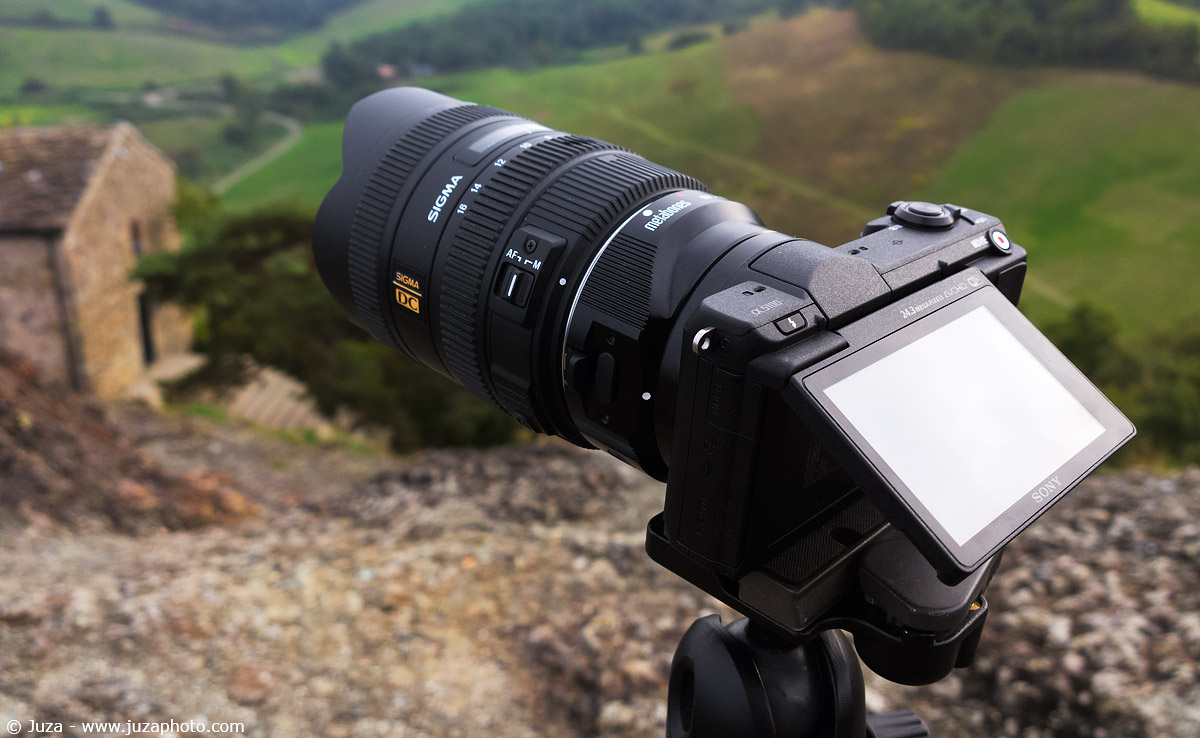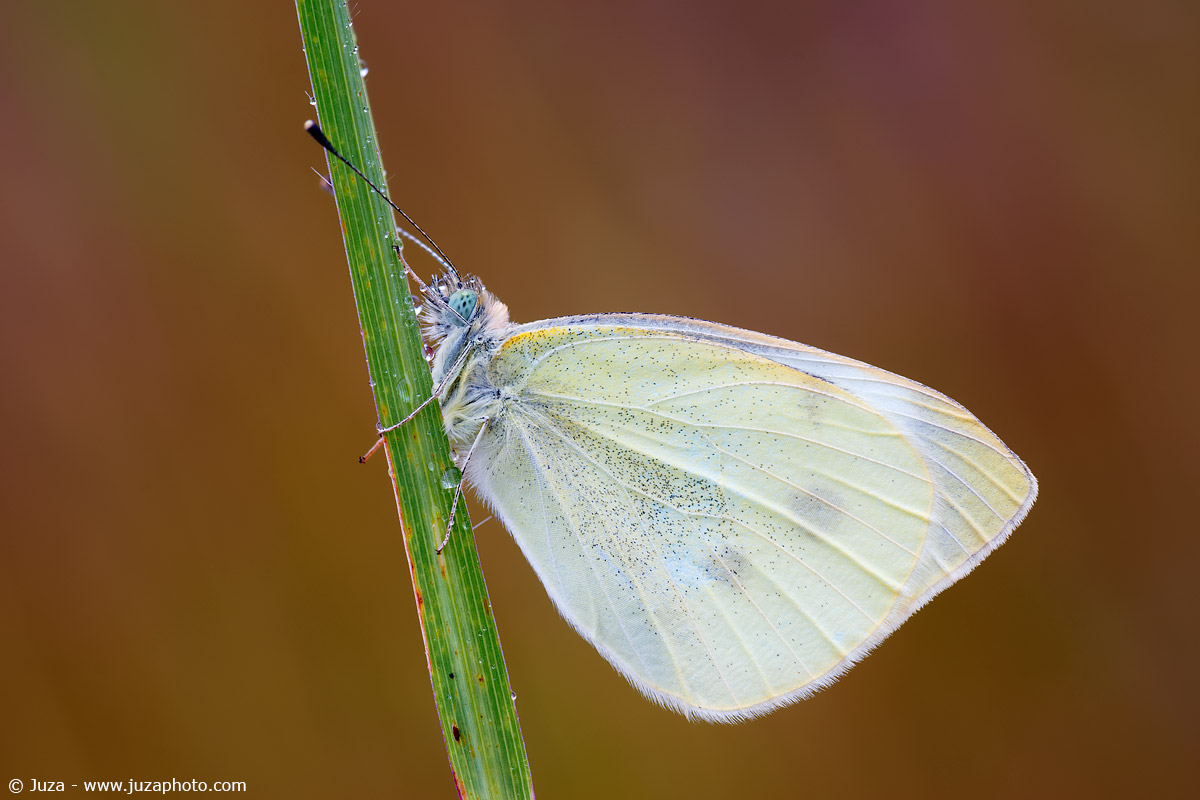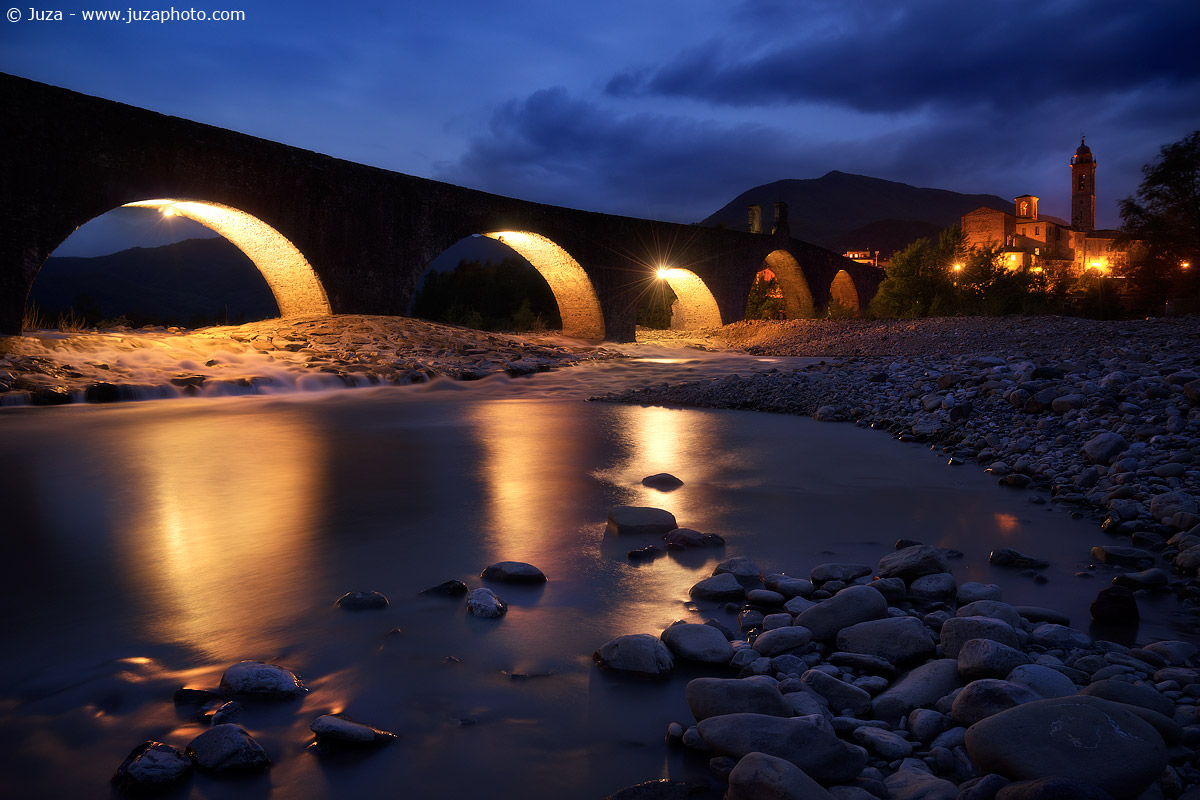From Reflex to Mirrorless (with the Sony A5100)
- Altro
» - Articoli
» From Reflex to Mirrorless (with the Sony A5100)
From Reflex to Mirrorless (with the Sony A5100), testo e foto by
Juza. Pubblicato il 22 Settembre 2014; 11 risposte, 33030 visite.
After using Canon cameras for almost ten years, I have decided to switch to Sony, and in particular to the Sony A5100. Why? At Photokina 2014, I really expected to see some serious mirrorless camera from Canon or Nikon; instead, once again the two 'giants' ignored the mirrorless world, a young but quickly emerging market.

Until few years ago, ML cameras were a niche market; nowadays, they have reached or surpassed the image quality of the best DSLR cameras, and they have finally reached the same AF speed. Many photographers that until few years ago would have never thought of leaving Canon and Nikon, me included, now are seriously considering the alternatives from other brands: mirrorless keep getting better and better, and thanks to the many lens adapter it is easy to switch without having to replace all your lens lineup.
Personally, I'll stay on the fence for some time: now I use Sony cameras with Canon lenses; if in future Canon will announce a truly outstanding ML camera (not an easy task, considering the excellent level reached by Sony) I'll go back to Canon, while if Sony announces the lenses that I need, with first rate optical quality, I'll complete the switch to Sony.
In this article, I have compared reflex and mirrorless cameras (and in particular with my new Sony A5100): let's see why ML are so interesting and what are their pros and cons!
Autofocus
The first mirrorless cameras had a very poor autofocus because they used exclusively contrast-detection autofocus; AF was barely acceptable for stationary subjects and it was completely unusable for tracking moving subjects. For many years, AF has been the Achille's heel of ML cameras.
Nowadays, several ML cameras have replaced few hundred pixels of the main image sensor with tiny phase detection AF sensors; the result is a much improved AF, more than enough for still subject and, in few cameras (Sony A6000 and Sony A5100, for example), good enough even for fast moving subjects. These mirrorless hav2 finally surpassed the AF capabilities of DSLRs in its price range, and in a couple of years all MLs will likely have and AF comparable or better than DSLRs.
Size and weight
Thanks to the simpler design, mirrorless cameras can be much smaller and lighter than DSLRs. Of course, it is also possible to make ML cameras as big as DSLRs: nowadays most ML focus on small size because they are aimed mainly to amateurs and travel photographers, but when the transition from reflex to mirrorless will be complete, we will see also ML cameras with the size and the ergonomics of pro DSLRs as the Nikon D800 or Canon 5D3. The recently announced Samsung NX1 already comes close, it has the same size of the Canon 70D and very similar ergonomics.
In the case of my Sony A5100, the weight is just 283 grams (battery included), instead of the 800 grams of my previous Canon 70D, a very welcome weight reduction that makes even easier traveling and backpacking.
Size is another advantage of ML cameras: the Sony A5100 measures just 110 x 63 x 36 mm, while the smallest reflex currently in production, the Canon 100D, measures 116 x 90 x 64 mm (the Canon 70D is 139 x 104 x 79 mm).

With good lenses, the 24 megapixels sensor of the A5100 gives excellent results, on par with the best APS-C cameras on the market today. Sony A5100, Canon EF 180mm f/3.5 L Macro USM, 0.6 sec f/9.0, ISO 100, tripod.
Faster continuous speed
The maximum FPS rate or SLRs is limited by the mechanical shutter and the mirror; MLs instead are limited only by the readout speed of the sensor and the buffer. The mirrorless that still use mechanical shutter have a continuous speed comparable to professional DSLRs (11-12 FPS), and some MLs with electronic shutter reach even 60 FPS at full resolution.
The Sony A5100 has about the same speed of the Canon 70D (6 FPS vs 7 FPS), in spite of much lower price; the Sony A6000, that can be considered a direct competitor to the 70D, has an impressive 11 FPS continuous shooting. Of course, fast shooting is useless without an equally fast autofocus tracking: the latest mirrorless from Sony, the A5100 and A6000, have finally reached the AF speed of SLR cameras in their price class.
Viewfinder (or lack of)
The Sony A5100 does not have a viewfinder; this allows to reduce size, weight and costs. In the past the viewfinder was an essential element of the camera, but with Live View I have abandoned it in favor of the large LCD screen. In landscape and macro photography, using the Live View instead of the viewfinder allows to frame easily the scene even when shooting from awkward angles; it helps to do a very precise manual focus and it gives a preview of the exposure in real time.
In other fields of photography, for example wildlife, the viewfinder is still the preferred choice: in this case, I'd recommend to get the slightly more expensive Sony A6000 instead, that has built-in electronic viewfinder. The electronic viewfinder has the advantage of being not depended by sensor size; while APS-C DSLRs have smaller viewfinders than FF DSLRs, mirrorless cameras can use large viewfinders even if they have APS-C or 4/3 sensors.

A photo taken with the Sony A6000, 'sister' of the A5100 in terms of sensor and AF). Sony A6000, Sony Vario-Tessar T* E 16-70mm f/4 ZA OSS, 1/30 f/9.0, ISO 100, tripod. Lagazuoi, Italy.
Mirror and shutter
As it is obvious from their name, mirrorless cameras does not have the mirror. Removing this component makes the camera easier to build (thus cheaper), more resistant (one less moving part), smaller and lighter. Other than that, it eliminates definitively the problem of camera vibrations due to mirror movements, so the mirror lock-up function is no longer needed.
The mechanical shutter is still present in most mirrorless cameras, but luckily most of them, included the Sony A5100, have the electronic first curtain, that eliminates shutter vibrations and reduces shutter noise. Some ML cameras, as the Sony A7s or the Panasonic GH4, have even the option to use a fully electronic shutter; in future (few years from now), the electronic shutter will completely replace the mechanical shutter.
Tiltable LCD screen and touch
In this aspect there is no difference between ML and DSLRs; the tiltable screen can be found on both kind of cameras. After using with great satisfaction the LCD screen of the Canon 70D, I'd never come back to a camera that lacks of this feature: it makes really, really more comfortable to compose the photo. Almost all Sony mirrorless cameras have tiltable screen, but the one that can be found in the A5100 has the can be moved up to 180 degrees, while the other Sony cameras stop at 90 degrees.
Like my previous 70D, the Sony A5100 has touchscreen: this feature is not as essential as the tiltable screen, but it makes a little easier to use some features of the camera (fo example, to magnify a portion of the image). I don't like too much the 16:9 ratio of the screen, for photographers the 3:2 screens are better, but it was necessary due to the size of the A5100, the 16:9 ratio was the only way to fit a large screen on such small camera body.
USB charging and micro-USB
The Sony A5100, like the 90% of cameras on the market, has a micro-USB port, that allows to easily download the photos to my computer using the same micro-USB cable that I use for the mobile phone and for everything else. Canon is one of the few brands that still use the obsolete mini-USB port, that has been replaced by micro-USB years ago, so when I downloaded the photos from the 70D I needed a dedicated cable.
Other than that, all Sony ML cameras can be recharged with a USB cable, reducing the necessity for a separate battery charger. I use a USB cable that I connect directly to the Skross MUV electric socket when I am travelling, or to the computer when I am at home (this is the same setup that I use to charge the mobile phone and the torch).
The possibility of direct USB recharging also allows to use external USB batteries, as the RavPower, to recharge the camera. My only complaint is that you can not recharge the camera while it is in use, as you can do with Samsung NX cameras.

Thanks to the 180 degrees tiltable screen, taking macro photos with the A5100 is a real pleasure. Sony A5100, Canon EF 180mm f/3.5 L Macro USM, 1.3 sec f/11.0, ISO 100, tripod. Few more things about the A5100
Being used to the Canon system, where entry-level cameras have reduced features and few customization options, I have been amazed by how much you can customize the A5100: you can choose the function to assign to most buttons (for example, I use the Help button for depth of field preview), and the menus have countless options to customize and fine tune every aspect of the camera.
The camera body is incredibly small, even smaller than what it may look for the photos - for me, it is a good thing, since I want to reduce as much as possible to bulk of my backpack and I don't care about ergonomics, since I almost always use the camera on tripod. It is amazing to think how much technology there is in such small camera!
The image quality is in line with the best APS-C cameras currently on the market, since it uses the same 24 megapixels sensor of the Sony A6000 and Nikon D7100: like most APS-C, it is fully usable up to 1600 ISO, or even 3200 ISO with good post processing and noise reduction; if you need ISO 6400, 12800 and above, currently there is no APS-C camera that can give good image quality at these sensitivities, so I'd recommend to go for a fullframe camera, as the excellent Sony A7s, Canon 6D or Nikon D610.
Since this is a very new camera, it is not fully supported yet by most adapters: for example, with the Metabones Smart Adapter IV I have no issues with the 8-16 and 24-105, while with the 180 macro the aperture often gets stuck. The Sony A5100 will be added between the supported cameras in the next firmware update by Metabones, I'll do the upgrade as soon as it becomes available (the adapter has a micro-USB port that allows to easily upgrade the firmware).
The price is another point in favor of the little Sony: at 500 € (or
550 US Dollars on B&H, if you live in the United States) it is a bargain, there are few cameras that have this quality and features at such price point.
Alternatives: A6000, A7s, EOS M
Why I have chosen the A5100 instead of the A6000? price is not an issue, since the difference is about 50 €; my reasons to prefer the A5100 are the wider tilt angle of the screen (180 degrees vs 90), the LCD with touchscreen, the lack of viewfinder (that I never use), the more user-friendly controls (the A5100 is cleaner and more essential). Other that that, the LCD screen of the A5100 can be moved without any problem even when the camera is mounted on a tripod, while the A6000 screen gets stuck in the tripod camera plate due to a design flaw.
I have excluded the lower-end A5000, instead, because it uses an old sensor that is much noisier than the 24 megapixels sensor of the A5100 and A6000.
I am very fascinated by the Sony A7s and its super clean, 12 megapixels fullframe sensor, but I have asked myself: how many times I use high ISO for macro and landscapes? The majority of my photos are taken at low ISO, and here fullframe does not offer big advantages in comparison to APS-C. For the rare situations when I'll need great high ISO (for example, northern lights trips), I'll borrow a FF camera.
The EOS M is a nice camera for its current price, but it has very poor AF, it is much slower than the A5100, it lacks micro-USB and USB recharging and it has no tiltable screen. Honestly, I'd have preferred to stay with Canon since I know well but brand, but for years its only mirrorless offer has been much worse than competition, and it still doesn't have any alternative to Sony ML cameras.
I have not considered the 4/3" sistems because I don't like the 4:3 image ratio, so I'd end up cropping all the photos to 3:2; moreover, I want a system that offers both ASP-C and fullframe cameras, so I have an option when I need great high ISO.
FujiFilm and Samsung have some interesting cameras and good lenses, but their systems are still too limited for what I need; I think that currently Sony is the leader in the mirrorless market.

One of the things that have made me choose Sony is that it offers both APS-C and FF mirroless cameras: in the situations where I need great image quality in low light, the A7 series cameras are a great choice. Sony A7, Sony FE 24-70mm f/4 ZA OSS Vario Tessar T*, 30 sec f/8.0, ISO 100, tripod. Bobbio, Italy. Lenses: Canon and Metabones
While I really like Sony cameras, I have not found yet Sony lenses that satisfy me completely: those that I have tried (24-70 FE and 16-70 E) are sharp in the center but they are soft in the corners (the 16-70 is a big better than its fullframe counterpart, but still not as good as I'd expect from a $1000 lens). It is a pity because they are otherwise very good lenses: built quality is on par with Canon and Nikon; AF is fast and silent and most of them have image stabilization.
I am very satisfied, instead, from the lenses that I currently use: my Sigma 8-16mm wide-angle, the Canon 24-105 standard zoom and the Canon 180mm macro lens. For this reason, I have decided to keep using them even on the A5100, using the
Metabones Smart Adapter IV EF-NEX, that maintains all features of the lens.
Of course, dedicated mirrorless lens would be much smaller and lighter, and they would allow to take advantage of the fast autofocus of the A5100: for now I'm going to 'stay on the window' and watch what come out from Sony, Sigma and Tamron, until one of these brands will announce a lens that satisfies me as much as my current lenses.
Conclusion: who is for?
Mirrorless are not (yet) the best choice for everyone: if you do mainly wildlife, sport, action photography, I'd recommend to stay with DSLRs for now, since no ML system offers native lenses for such fields, and the adapters makes AF too slow. That said, ML systems are quickly growing, and FujiFilm and Samsung have already announced the development of professional telephotos (the 140-400mm and the 300mm f/2.8) that will be ready for next year, Sony will likely follow with similar lenses.
For landscape, macro, travel and portrait/studio photographers, instead, ML cameras are now a serious alternative to reflex: if you are fascinated by this new 'world' are there are mirrorless cameras suitable for your exigencies, I recommend to give it a try!
Risposte e commenti
Che cosa ne pensi di questo articolo?
Vuoi dire la tua, fare domande all'autore o semplicemente fare i complimenti per un articolo che ti ha colpito particolarmente? Per partecipare iscriviti a JuzaPhoto, è semplice e gratuito!
Non solo: iscrivendoti potrai creare una tua pagina personale, pubblicare foto, ricevere commenti, partecipare alle discussioni e sfruttare tutte le funzionalità di JuzaPhoto. Con oltre 256000 iscritti, c'è spazio per tutti, dal principiante al professionista.
| inviato il 22 Settembre 2014 ore 20:05
Very interesting. Thanks for sharing. |
| inviato il 22 Settembre 2014 ore 22:05
I have never been very interested in digital cameras other than DSLR's from Canon and Nikon.......until recently!, because things are moving very fast...................Canon and Nikon aren't really pushing themselves to do new or ingenious things like some of the other manufacturers (Canon especially with their 'old' sensor technology compared to Nikon with their superior noise and dynamic range....which is a Sony technology!)..........if I could mount my Canon 500mm with proper auto focus etc on a Samsung NX1........I would buy it instead of a Canon 7D mark II ! (which I will probably buy early next year?)
Great article Juza!.......if you can get your hands on and review a Samsung NX1 in the future, I would love to know what your opinions are! |
| inviato il 23 Settembre 2014 ore 7:24
Very nice article Juza, with gorgeous images. However it is not fullfledged. You have not mentioned about or given comparision of IS0, shutter speed, noise, result with tele lense or this is good with short focal lens only etc.Wish you could have included some images of birds too.
Thanks and warm Regards,
Satish. |
| inviato il 23 Settembre 2014 ore 14:18
Thanks for the comments!
“ if you can get your hands on and review a Samsung NX1 in the future, I would love to know what your opinions are! „
I will try to review it :-)
“ You have not mentioned about or given comparision of IS0, shutter speed, noise, result with tele lense or this is good with short focal lens only etc. „
I'm going to publish more articles about the Sony system in future, but mainly regarding llandscape and macro photographt...currently it is not usable for serious bird photography due to the lack of native lenses (with the adapter the AF becomes unusable).
I am really looking forward for the new teles that Sony will release in a couple of years! In the meantime, for birds and wildlife I'll use other brands. |
| inviato il 24 Settembre 2014 ore 1:50
Thank you Juza ,
Great article ,very interesting and very well argued, pictures are very good , good work .
thank you |
| inviato il 24 Settembre 2014 ore 16:52
Thank you Juza for the reply.
Regards,
Satish. |
| inviato il 25 Settembre 2014 ore 12:23
as a bird shooter it may be a long time before i would look at ML camera but i look forward to you doing a full review of the Sony camera |
| inviato il 30 Settembre 2014 ore 9:08
Good decision Juza. I think, that many people erroneously think, that reflex camera has better IQ due to the mirror existence. But every DSLR, in the moment of exposure, works in the absolutely same manner as "compacts" or "mirrorless". Mirror has absolutely no influence to the IQ. Greetings! Vladimiro.  |
| inviato il 05 Ottobre 2014 ore 12:39
Nice, very nice article
Shooting canon, and rx100 and also thinking for going to one of the NEXes...
What I can say the old RX100 and the new allow the use of an external battery at condition that they have the same voltage....
Could it be the same for the NEX....
Would be interesting to try out. Asked the same question to Sony and the answers we're quit different.
I would like to use it for night photography
Thanks for any respons |
| inviato il 06 Ottobre 2014 ore 14:39
Hello Juza and community, as usual your article is very interesting, I'm also thinking that ML cameras are quickly progressing and I strongly think that future will be in favour of ML against DSLR, then slowly but surely the DSLR should disappears. But for now they still are superior on many aspects. Personally AF speed is very important and when I'm using my F/1.4 50mm I'm always a little bit frustrated to see that the AF is much slower than my high grade lens 14-24, 24-70 or 70-200. Even with TC my 70-200 is faster. I've some friends using mirrorless Fuji and Sony camera, the guy using Sony, likes to make wildlife photos, it was almost impossible for him with his ML, so, he just bought a DSLR NIKON 7100. The other big weakness is digital viewfinder, very poor and artificial vision of the scene in scope. All look very reddish.
I'm also surprised by your choice of not using a mirrorless with viewer, I think in a sunny day, it's very difficult to make composition using the LCD display, I also use a point and shot Canon camera and I hate to shoot on glare light.
My other friend is using the Fuji XPRO-1 very, very good range finder camera but here again not always easy to get what you see even with the virtual square frame. Long lens is visible in the viewfinder and this is unpleasant.
Many argues that ML are lighter and smaller, that true, although the Fuji XPRO-1 is not very light and when you are using a long lens the benefit of the weight and size is less significant. None of these cameras are pocketable as my S95 is. Of course in a trekking bag less weight makes a difference.
Finally a word on Sony Corporation. Sony has always demonstrated ability to develop new and high technology, they created Trinitron TV, they firstly introduced Video 8 Handycam, they created as well the Playstation and excellent blue ray, Sony created also some excellent Vaio PC and now they are making a lot of camera. The problem with Sony is that they jump in many technologies, when not creating them self, but they also drop off very quickly and with time they lose the market. Playstation has been overtaken by XBox, domination in TV is off, they stopped the production of Vaio and they recently announced that they abandon DSLR cameras. They also have a relatively poor and very expensive lens collection. Look at the 500mm much inferior than 500mm of Nikon or Canon but much more expensive. The best thing Sony does today is the sensors. Nikon use Sony sensors.
Personally I don't care much with camera body, even though I think D810, D4, D7100, Canon 5D Mark III and maybe D750 are globally the best all-purpose cameras. What is more important for me is my lens. In the future I'm open to buy a ML camera if they are superior and compatible with my lens.
Last but not less, some people say they have big hands and they hate to have a small camera in their fingers, they are not feeling comfortable with small toy.
All the best to all of you.
Greetings, Francis
|
| inviato il 28 Settembre 2015 ore 13:05
Very surprised you think that ML are better and cannot image where you get the idea from that the results are better. I have a Nikon DSLR for serious work and a Micro Four Thirds for messing about. The LCD or electronic viewfinder on ML just do not compare with an optical viewfinder, either in a DSLR or a Leica M series. |


 JuzaPhoto contiene link affiliati Amazon ed Ebay e riceve una commissione in caso di acquisto attraverso link affiliati.
JuzaPhoto contiene link affiliati Amazon ed Ebay e riceve una commissione in caso di acquisto attraverso link affiliati.